Contents
Eikando Temple
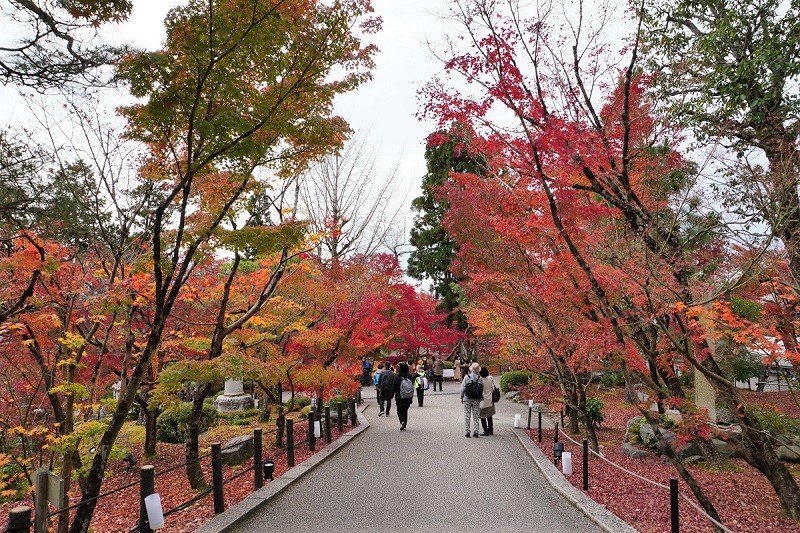
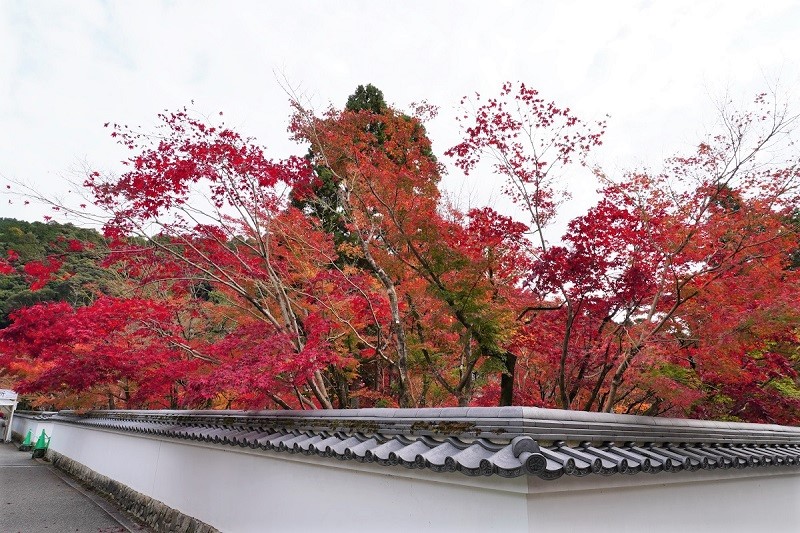
Eikando Temple has been known as a famous place for autumn leaves since ancient times, and it is called Momiji’s Eikan-do. The official name is Muryojuin Zenrin-ji Temple. From around mid-November, you can stroll through the bright red maple garden, colorfully coloring the precincts.
History of Eikando

Eikando Temple was founded in the early Heian period by Shinsho, a disciple of Kobo Daishi Kukai. In 853, the mountain lodge of Fujiwara no Sekio, a poet and literary person, was taken over as a temple by Shinsho. In 863, it was given the title of “Zenrin-ji Temple” by Emperor Seiwa.
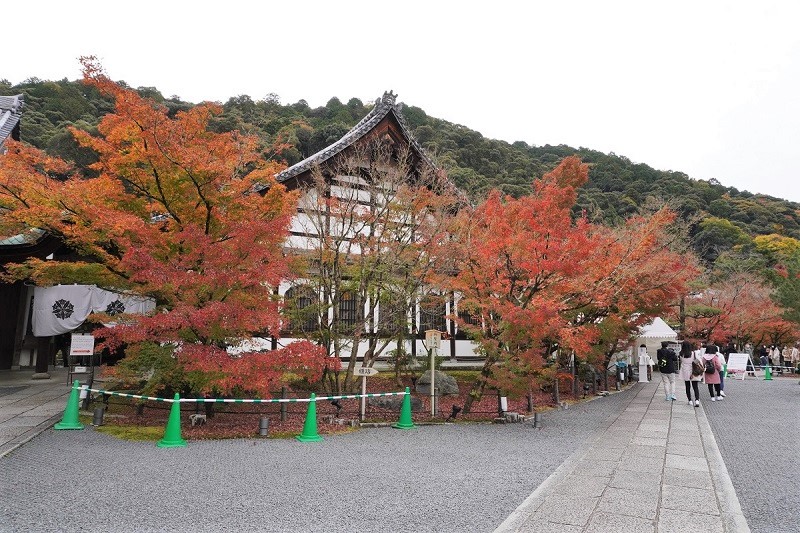
After that, the temple was greatly developed by Yokan. He was the great contributor to the restoration of the temple and the seventh head priest of Zenrin-ji Temple. He was an Amitabha believer who studied the Sanron sect. He encouraged people to recite Nembutsu and established Yakuo-in on the temple ground, and enshrined the Amitabha statue. He actively engaged in charitable projects such as relief for the sick. Zenrin-ji Temple came to be called Eikan-do. (Japanese pronunciation of Yokan is Eikan.)
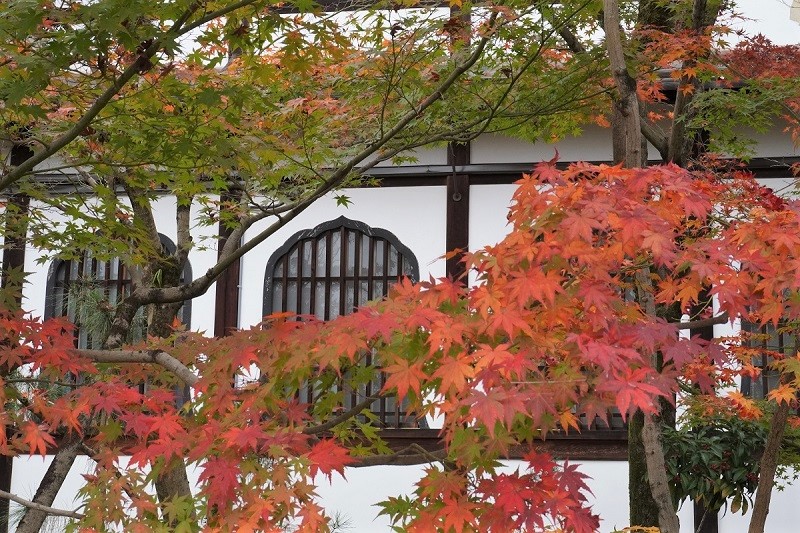
After that, Shohen, a Shingon sect monk, became the 12th head priest of Eikan-do Temple at the beginning of the Kamakura period. Although he initially criticized Honen, he became a disciple of Honen and entered Nembutsu-mon, Jodo sect (Pure Land Buddhism). Eikan-do Temple became the headquarters of the Seizan-Zenrin-ji Branch of the Pure Land Sect.
the principal image : MIKAERI Amida
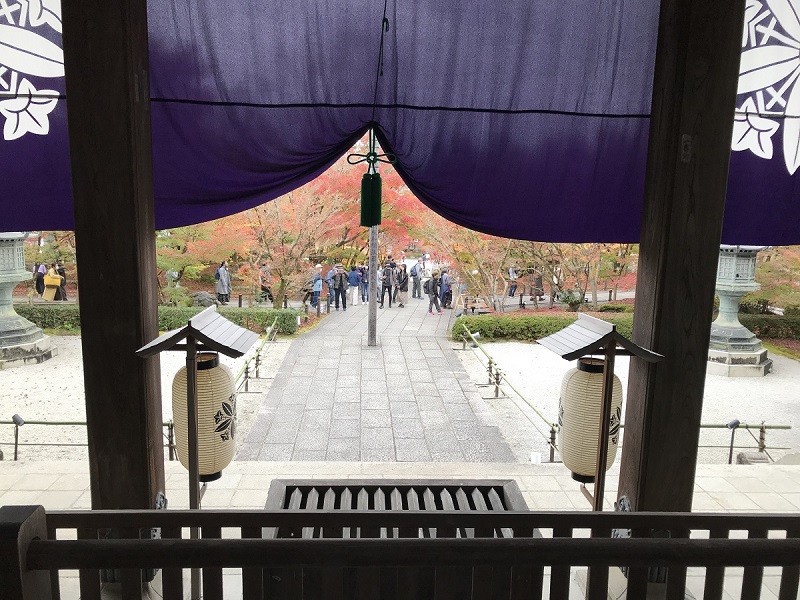

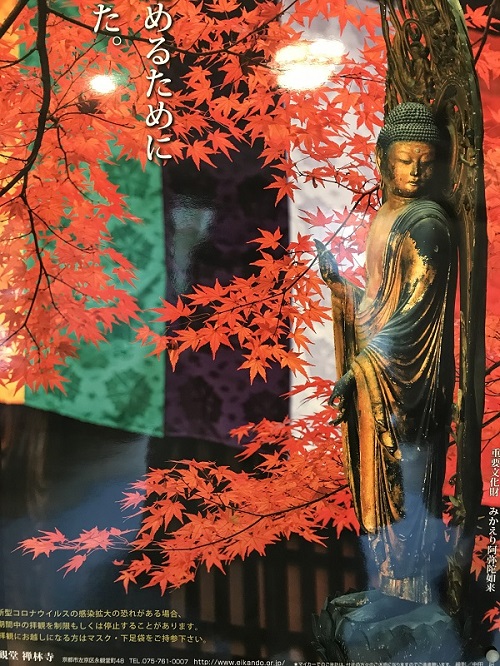
The principal image is known as Mikaeri Amida statue (Important Cultural Property). This unique statue is looking over its left shoulder. It is said that when Yokan was surprised and stopped walking, Amida Nyorai turned around and said to him ‘Yokan, you are too slow.’ It is said that Amida Nyorai looks at the surroundings with compassion and gives love.
Kara-mon Gate
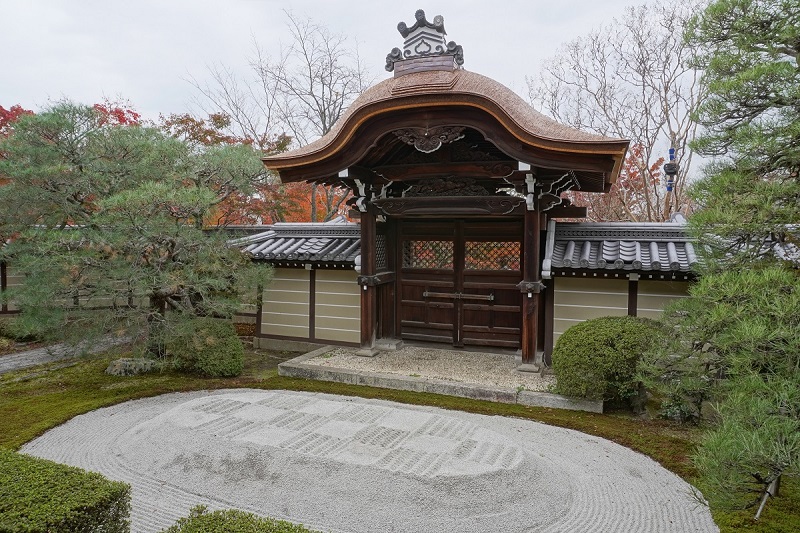
There is the Kara-mon gate in the garden of Shaka-do. It was used when the emperor’s messenger went in and out. There is a sandpile, purifying sand, in front of the Kara-mon gate. It was said that the messenger stepped on to cleanse himself.
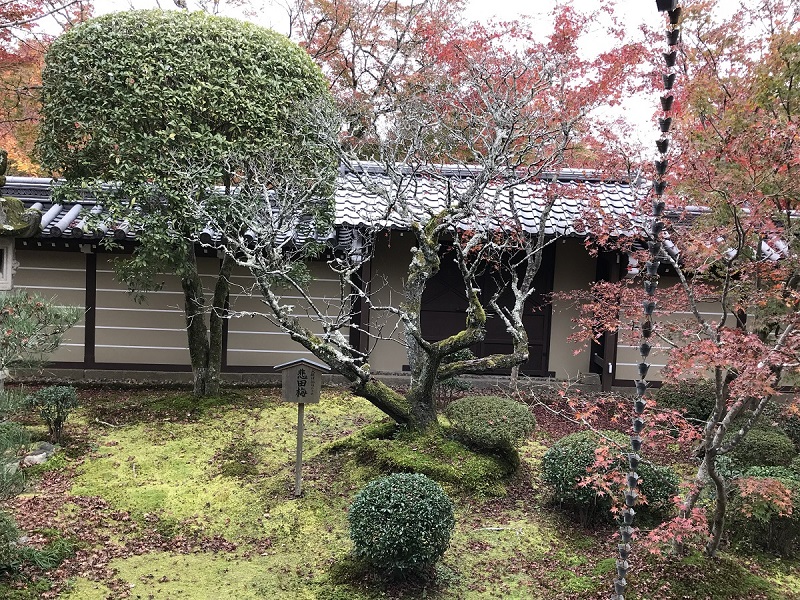
It is the plum tree that Yokan grew up as an aid to medicinal food, and he relieved distress among the poor. It was named “Hidenbai”.
Hojo-ike Pond
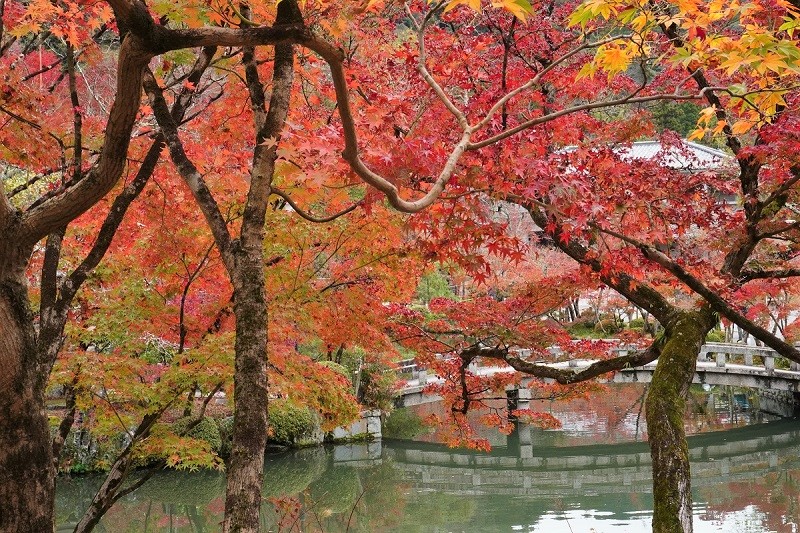
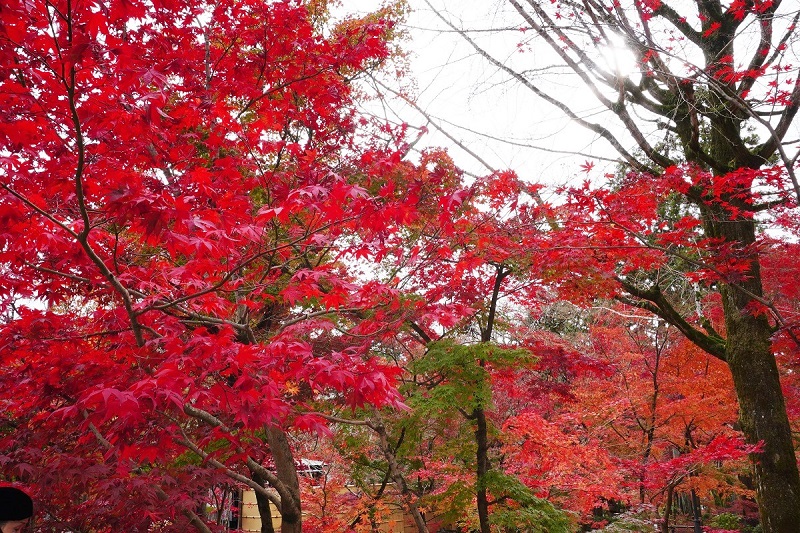

The area around Hojo-ike Pond is a popular shooting spot where you can see the scenery of the bright red autumn leaves. The view from Gokuraku-bashi Bridge is also wonderful, and there is Benzaiten Shrine surrounded by autumn leaves at the end of the bridge.
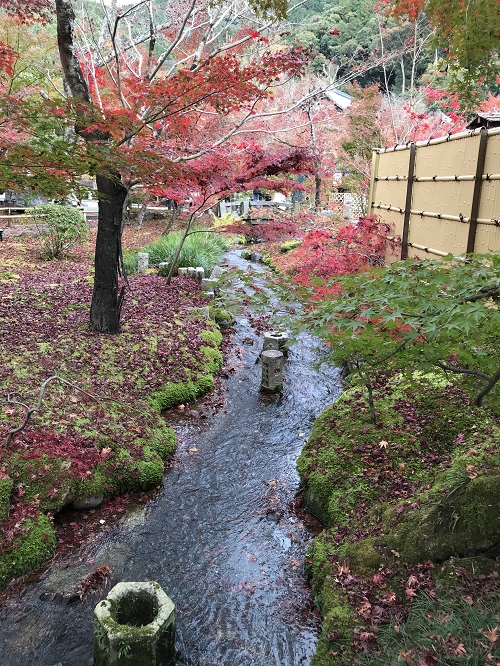
Tahoto tower
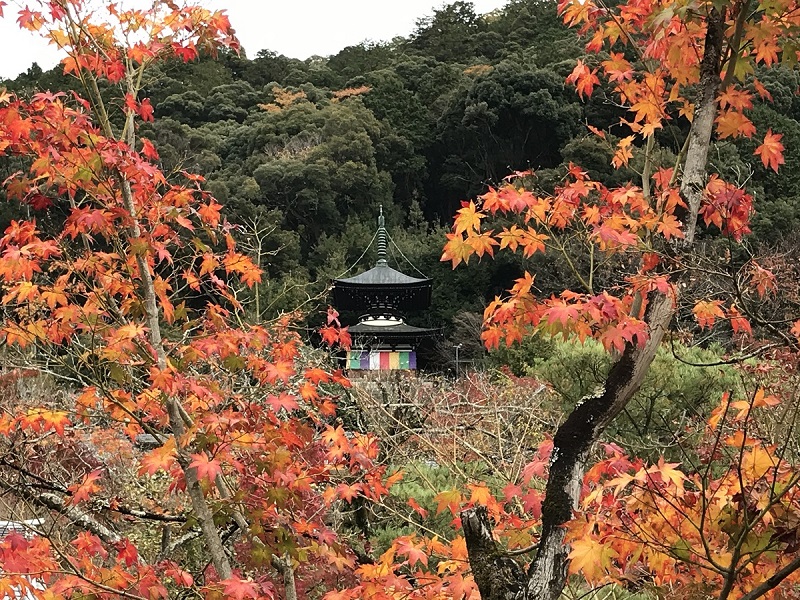
From the precincts, you can see Taho-to tower, which stands on a small mountain. If you go up the stairs, you will reach the tower. You can overlook the precincts surrounded by autumn leaves and the town of Kyoto. It is the best shooting spot.
Access
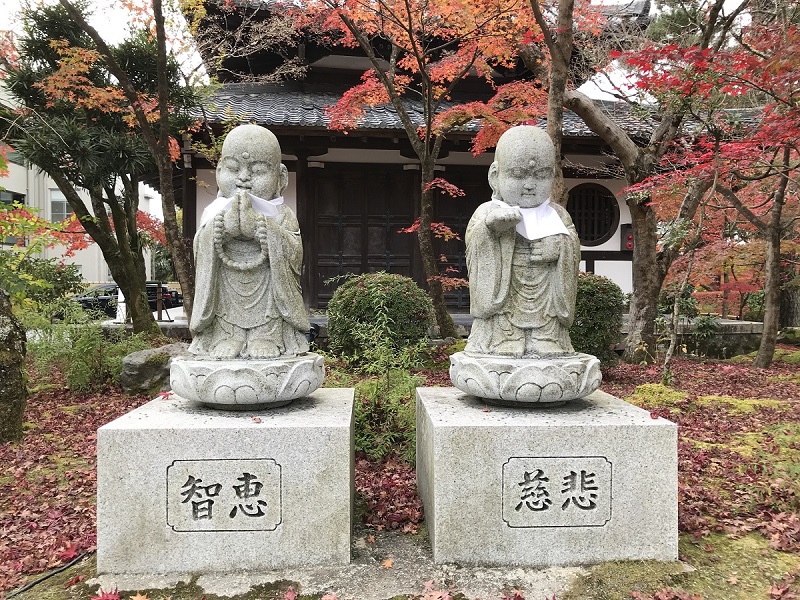
3 minutes walk from the city bus “Nanzenji Eikando Road” bus stop
Click here for information of NANZEN-ji Temple.
Click here for shops around here.